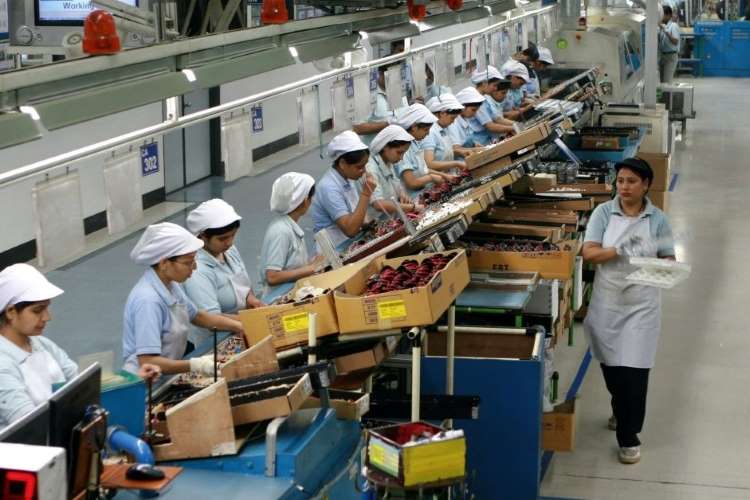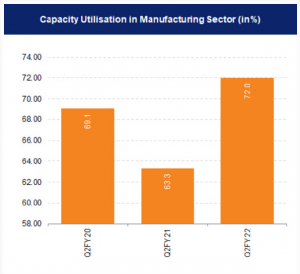
The Indian economy continues to display mixed signals, with signs of a rebound followed by periods of slowdown. The recent CMIE data highlights a crunch in new investment projects within the manufacturing sector during the three months ending in June 2023. This data reveals that the value of new projects is lower than both the previous quarter (March 2023) and the same period last year. The Centre for Monitoring Indian Economy’s project tracker confirms these findings.
In June, new project announcements in the manufacturing segment amounted to approximately Rs 85,000 crore, marking a significant 66% decline from the Rs 2.5 trillion observed in June 2022. In fact, in March 2022, new projects worth Rs 1.6 trillion were announced. As a result, June 2023 represents the lowest quarterly value of manufacturing announcements since December 2020. While the decline is less severe than the pre-pandemic period, it still presents unwelcome news for an economy that prides itself on being an outlier among its counterparts who are facing recessionary challenges.
READ | Digital Personal Data Protection Bill gets Cabinet nod amid privacy concerns
Glad tidings for manufacturing sector
A flourishing manufacturing sector serves as a strong indicator of economic growth and employment generation. Manufacturing currently contributes 14% to India’s GDP, and since the launch of the Make in India initiative in 2014, the government has aimed to increase manufacturing’s share in GDP to 25%. However, this ratio has remained stagnant since 2014. The government also looks to the private sector to increase their investments.

This expectation is not unfounded, as a lack of private investments hinders real growth and employment. A decline in new investment projects signifies a deliberate slowdown in expansion, reflecting firms’ lack of confidence in future demand. Insufficient investment in the manufacturing sector can also have a negative impact on capital formation, which reduces productive assets necessary for economic growth. Lower investments impede overall economic expansion.
This week, Policy Circle reported a record increase in the debt profiles of corporations as they pursue capital expenditure amidst a global downturn. India Inc. remains confident in the country’s economic rebound and increasing demand. While high levels of corporate debt pose financial risks, they also indicate a growing economy. Companies refrain from heavy investments until they have confidence in the future.
During the coronavirus pandemic, India experienced a lull in manufacturing activities, resulting in manufacturing announcements plummeting to Rs 0.4 trillion in June 2019, down from Rs 0.9 trillion in June 2018. However, the sector experienced significant recovery after 2020, with new projects worth Rs 3.2 trillion announced in June 2021.
A select few sectors have historically been the driving force behind investments in India, as revealed by sectoral data. Chemicals and chemical products have dominated recent announcements, accounting for over half of the value of manufacturing projects. Other sectors, such as machinery, transport equipment, and metals and metal products, have also seen notable activity. A higher concentration of investment in specific sectors can create economic imbalances and increase vulnerability to external shocks.
A recent report from Bank of Baroda highlights the low compound annual growth rate (CAGR) of corporate investments relative to economic growth in India. The report indicates that the fixed asset creation of corporations stands at 4.9%, lower than the 9.8% CAGR in nominal GDP. Certain industries exhibit a higher concentration ratio due to their inherent nature, such as crude oil, power, and telecom.
The production-linked incentive scheme (PLI) has played a significant role in boosting manufacturing companies. By providing incentives and support to specific sectors like semiconductors and renewable energy, the scheme aims to attract investment and foster the growth of these emerging industries. This has not only expanded high-value-add manufacturing by providing capital but has also positioned India as an attractive investment destination.
According to a Morgan Stanley report, it is expected that India’s manufacturing base will triple by 2031, with its share in GDP rising from approximately 16% to 21%. However, the country must leverage a shift in regional and global supply chains. There is an opportunity for India to attract manufacturing investments and become part of these new supply chains, as the developed world seeks to diversify their operations away from countries like China.
Manufacturing investments reached over Rs 10 trillion on a rolling four-quarter basis in March 2022, reaching a peak of Rs 16.7 trillion for the four quarters ending in December 2022. The latest data for the four quarters ending in June 2023 shows manufacturing investments at Rs 11.7 trillion.
